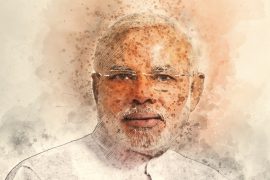Tea, the quintessential Indian beverage, was not always consumed on a daily basis. Instead, it was a luxury, used only for medicinal purposes. It became a regular household drink only after the British commenced tea cultivation in India in the early nineteenth century.
On Tuesday, 25 September 1660, Samuel Pepys, an Admiralty officer famous for taking notes in his diary, had a meeting regarding war and peace with Holland, France, and Spain. He was joined by experts in naval affairs like Sir William Batten, Colonel Slingsby, and Sir Richard Ford. It was in that meeting that he first experienced the taste of Tea. He wrote in his diary:
Sir R. Ford talked like a man of great reason and experience. And afterwards I did send for a cup of tee (a China drink) of which I never had drank before.
Samuel Pepys’ diary is the earliest reference to someone enjoying a cup of Tea in England. Soon, Tea, which started as a luxury used for medical purposes, became a popular household item. ‘Tea time’ became a treasured custom with careful ritualistic preparation between 4:00 – and 4:30 PM. Such was the popularity that the East India Company was required—by an act of Parliament—to keep a year’s worth of Tea in stock.
Until the early nineteenth century, the production and export of Tea were exclusive to China. The British love for Tea was proving to be very expensive, almost unaffordable, as a vast amount of silver bullion was leaving the country in exchange for Tea since Britain could not provide an equitable trade exchange that China was willing to accept.
So, to find alternatives, British merchants found out what China would take in return for supplying them with Tea: opium. The use of opium was banned, except for medicine. Ergo, the traders were smuggling it from the state of Bengal.
The East India Company took control of the opium market in India and developed new cultivation techniques, encouraging farmers to boost production. The British government took no account of the trade; they neither encouraged nor discouraged it.
They adopted the attitude of laissez-faire, and the East India Company sidestepped the ban, employing small traders to carry forward the illegal deals. Indian opium made its way to China in return for a payment in silver, which was then used to buy Tea and other goods. China was paid for the entire sale of Tea through the opium trade.
In 1836, the problem of opium addiction was getting out of hand, and the trade had become a hot topic of debate in Beijing, where the King completely opposed the trade while a fraction demanded legalisation to irrigate public profits. Emperor Daoguang, considered a great monarch, proclaimed the following as a response:
It is true, I cannot prevent the introduction of the flowing poison; gain-seeking and corrupt men will, for profit and sensuality, defeat my wishes; but nothing will induce me to derive a revenue from the vice and misery of my people.
Under his command, 20,000 chests of opium were confiscated, which immediately prompted a conflict. Gunboats were sent out to resolve the issue. Many politicians and merchants viewed this as an opportunity to open more trading opportunities with China by force and succeeded in doing so.
In the meantime, the Tea market began shifting to India. Lord George Macartney, who was in China to negotiate British diplomatic relations, was able to collect some shoots of Tea and transport them to Bengal. By the 1830s, Tea estates were established in Assam to plant samples collected from China.
The estates looked like cotton and sugarcane plantations of the Americas, but slavery had been banned in 1833. So, how did they get cheap labour? Legislation known as penal contracts/indenture contracts was passed. These questionable contracts, signed voluntarily, bound labourers to work for a certain period. Since the contracts were derived from the laws of masters and servants of England, the conditions of these labourers were slave-like, and once signed, the labourers could not breach the contract.
The tea industry took off and thrived On the misery of these labourers. Tea, a luxurious item, was exclusively an export item; however, with increased production, the prices dipped. The British turned this into an opportunity to capitalise within the country by encouraging tea breaks at factories, mills, mines, etc., and selling cheap Tea to workers. Soon, Indians, too, like the British, adopted the custom of drinking Tea with milk and sugar on a regular basis.
While the history of sweet and spicy drinks can be traced to 5000 to 9000 years ago, sweet, spicy and bitter drinks were served only for medicinal purposes. Over time, Tea adapted to serve the Indian taste buds and became a cultural reflection. Masala, a mix of ginger, cardamom, cinnamon, etc., and milk had initially helped to cut the high cost of tea leaves. It enabled multiple uses of the same tea leaves without losing the taste.
Now, Chai is available in every corner of the country—on streets, at railway stations, served at home, at cafes, and hotels. Tea stalls have become a hub for socialising and a quick break from a tiresome day.
India is still one of the largest Tea producers in the world, employing more than 2 million people. However, even today, plantation workers live in deplorable living conditions; their families face malnourishment. The Tea industry in India has been condemned for disregarding the health and safety of its workers, for using harmful chemicals and for employing child labour.
Tea, the world’s most popular drink, has prompted international trade, drug smuggling, wars and abuse of indentured workers.
-30-
Copyright©Madras Courier, All Rights Reserved. You may share using our article tools. Please don't cut articles from madrascourier.com and redistribute by email, post to the web, mobile phone or social media.Please send in your feed back and comments to [email protected]











